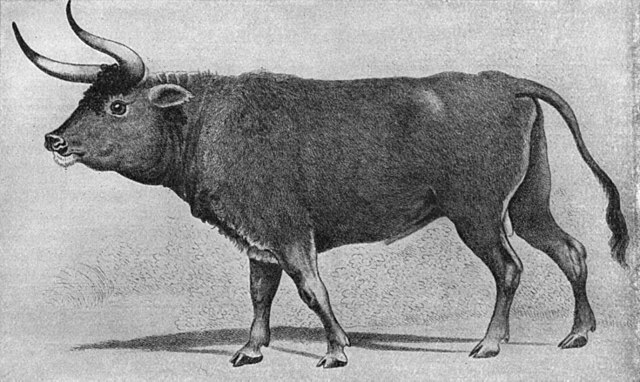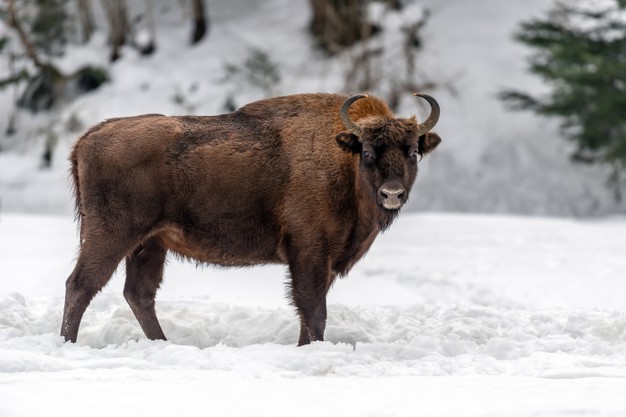Aurochs is a bygone species of wild OX from the family Bovidae. Fossil evidence implies that aurochs originate from India, where it seemed 2 million years ago. From India, aurochs shifted to Europe, Central Asia and North Africa, and developed in three varied subspecies (Indian, Eurasian and North African aurochs). Let’s talk about some interesting facts about Aurochs.
Interesting Aurochs Facts:
Aurochs was able to surpass 6 feet in height (at the shoulders) and 1.500 to 3.300 pounds of weight. Males were much larger than females.
Males (bulls) were wrapped with dark brown or black shaggy coats with light stripes on the back, while females (cows) were covered with reddish-brown color.
Aurochs possessed large skulls and strong, muscular necks and shoulders.
It’s legs were longer and stronger than legs of other domestic cattle’s.
Aurochs carried large (around 31 inches long) forward curved horns.
People living in Anatolia and in the Near East honored aurochs as sacred animals during the Iron Age.
Aurochs is a forefather of domestic cattle.
Wolves, bears, tigers, hyenas and lions were hereditary enemies of aurochs. Aurochs had inhabited and wandered in the herds of around 30 animals.
Aurochs are characterized as swift, fearless and very fierce animals in “The Gallic War”, a book composed by Julius Cesar.

Aurochs are extinct animals. The last female aurochs died in 1627 in poland.
Scientists have tried to bring back aurochs many times by using DNA and modern biology.
Aurochs were land grazing animals, their food included grass, twig, acorn etc.
Their young calves were vulnerable to predators such as wolves and large cats.
Aurochs were herbivores and used to eat plant based food.
They were living in Europe, Asia, and North Africa.
The main reason for their extinction was unrestricted hunting, reduction of grazing land due farming and cattle disease.





Leave a Reply